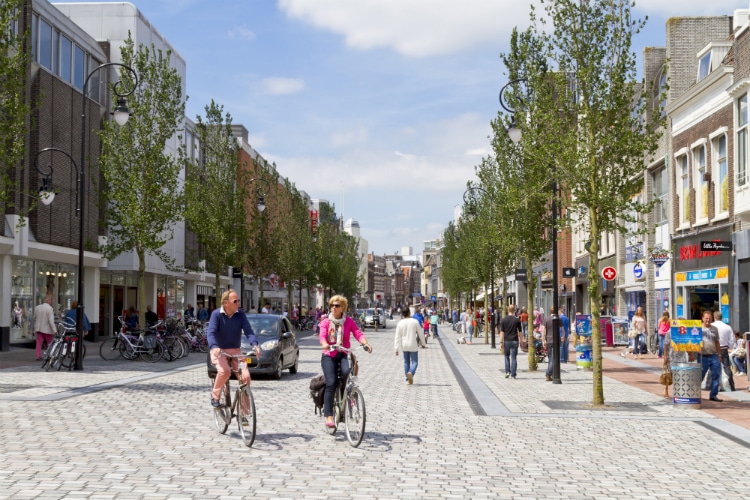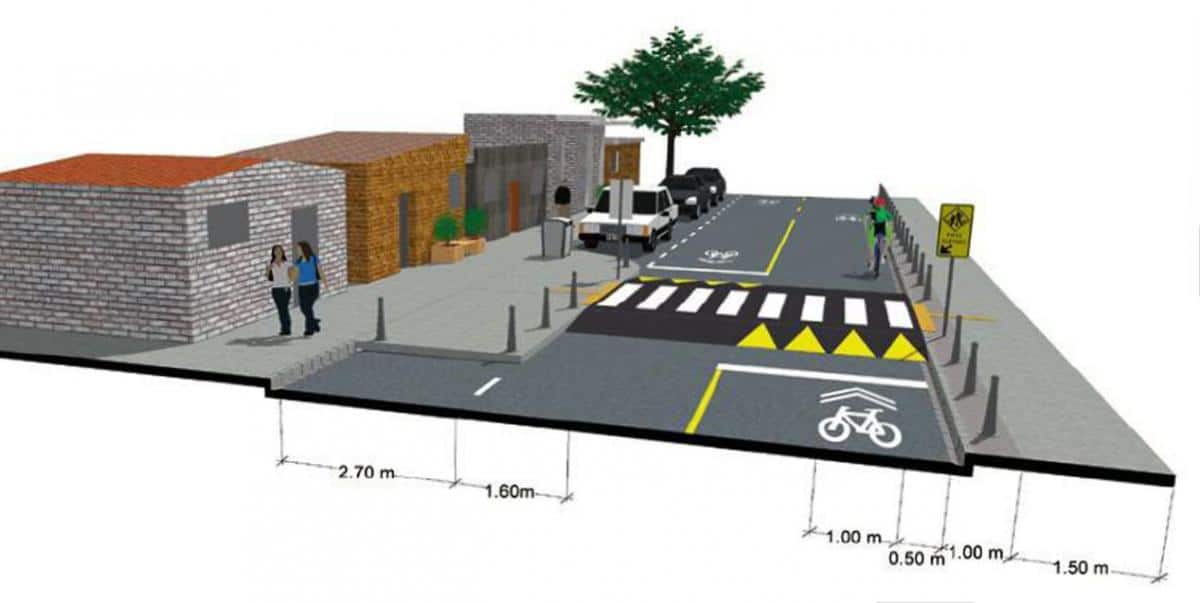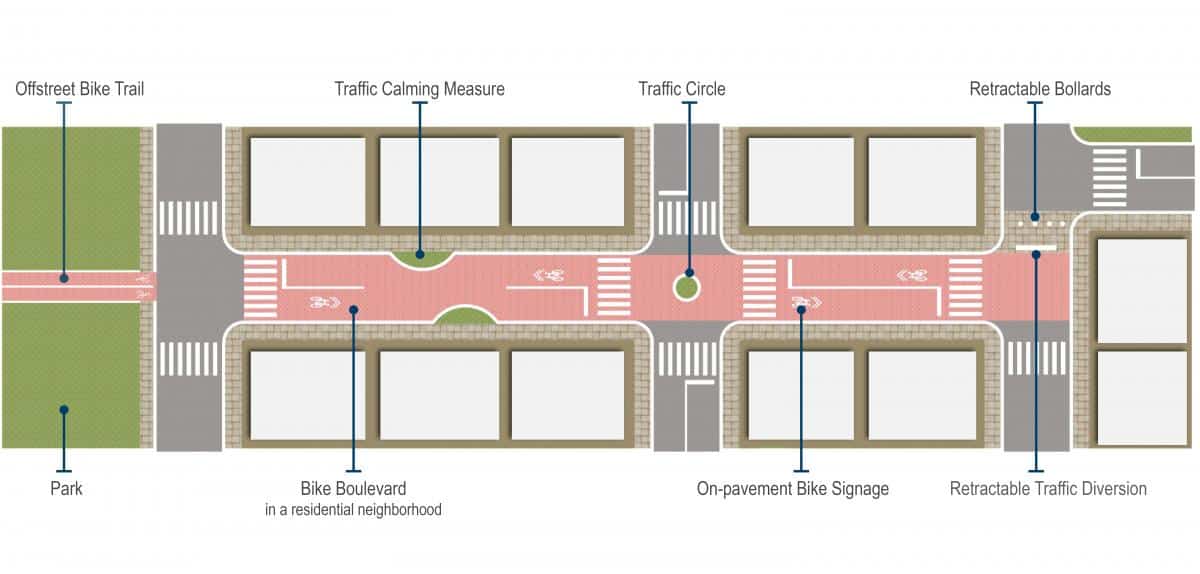Shared streets are spaces where all modes of transport are given equal priority; pedestrians, cyclists, and other local residents share the right-of-way and travel together.
It is best for shared streets to be located on streets with low traffic volumes designed for vehicle speeds between 20 and 30 km/hr, with an ultimate maximum of 40 km/hr.
An effective shared street:
- Provides continuity to other infrastructure (usually bike lanes)
- Indicates preferred routes through high traffic corridors
- Includes measures to reduce vehicle speed or volume
To ensure low speed, traffic calming measures and horizontal signage should be provided to warn drivers about the presence of cyclists.
References
Projects and Programs Manual to Encourage Cycling in Communities
NACTO, What’s Mine is Yours: Planning, Designing, and Implementing Shared Streets
Eric Jaffe for CityLab, “6 Places Where Cars, Bikes, and Pedestrians All Share the Road As Equals”
Fig. 1: The planner.co.uk
Fig. 2 & Fig. 3: Cities Safer by Design


